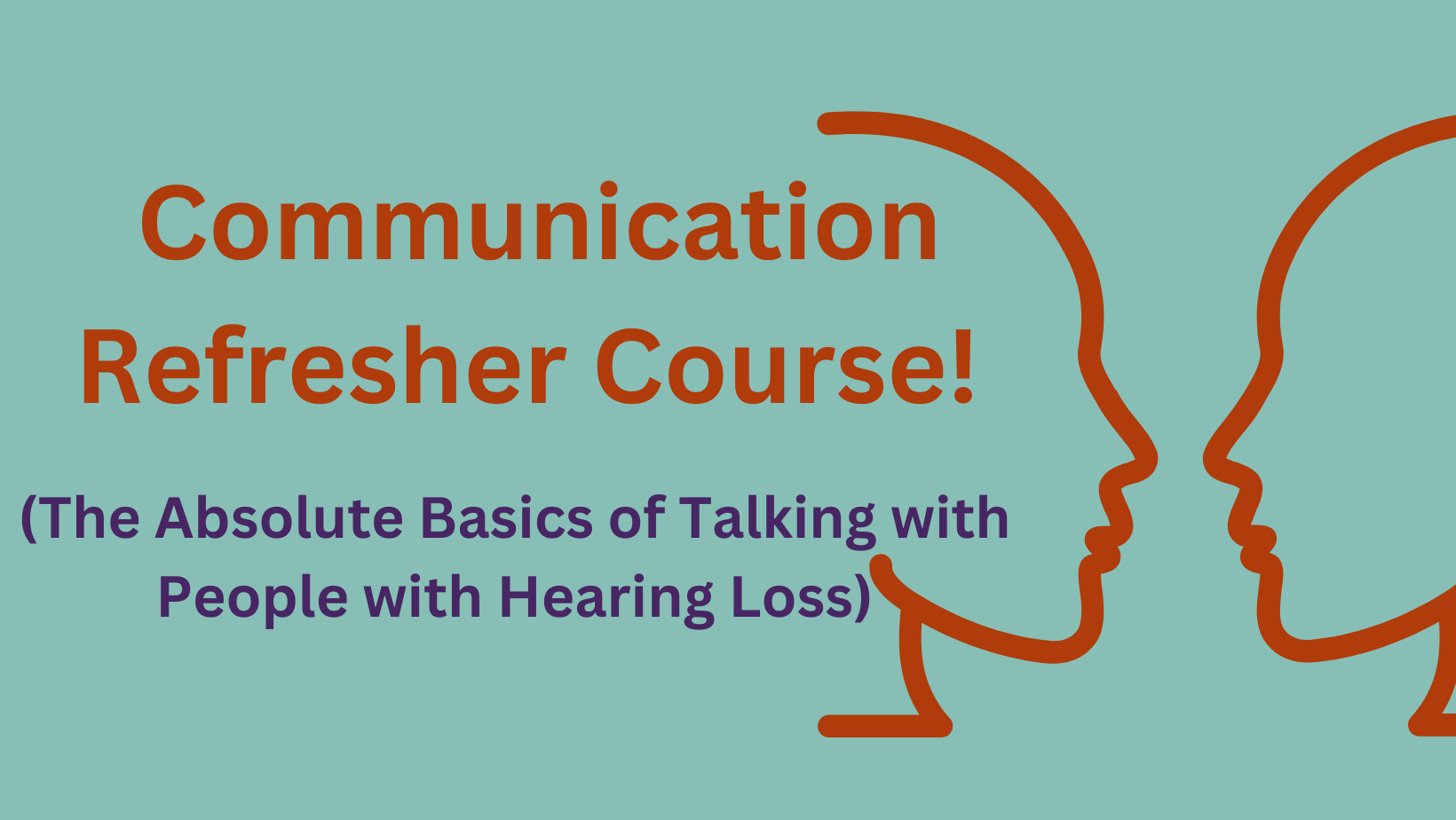It’s not a university level course, or even a highly specialized skill. It simply shouldn’t be that difficult for ‘hearing’ people to communicate well with people like me, the ones who have hearing loss.
After all, WE have the hard job – trying to hear and understand what people are saying, especially those with less than stellar communication skills – mumblers and fidgeters, for example. For hearing people, the only real prerequisite is wanting to have an enjoyable and/or productive conversation and to be willing to put in a little extra effort. Once that’s established, the absolute basics of good communication can be summed up in a short paragraph with short sentences.
Get the person’s attention. Face them. Turn down background noise. Turn up the light-on-your face. Speak clearly at a normal pace, unless otherwise directed. Keep face clear of visual obstructions. Repeat when asked. Rephrase if necessary. One person speaks at a time. Breathe.
But there’s a catch. These important tips are so simple – and people with hearing loss look so normal – that they’re frequently forgettable.
And that’s why we frequently write about these rules. The standard flow of conversation when no hearing loss is present does not use these rules. Hearing people can carry on conversations in dimly lit rooms with music in the background while reading their phone messages. Talking with us requires a few minor behavioral changes. And all of us – even we the people with hearing loss – forget the rules on occasion. We need constant reminding and the occasional refresher course is helpful.
So, how do you talk with a person with hearing loss?
- With the same respect and courtesy that you accord to anyone.
- Ask the person what would work best for optimal communication. A fancy way of asking, “is this working for you?”
- Always have the person’s attention before starting to speak. If we didn’t hear the first half of the sentence, the second half isn’t going to make much sense.
- People with hearing loss need to see your face. The way you work your eyes, mouth, and facial muscles helps us understand the words you’re saying.
- Don’t be a bobble-head. If you can minimize head and body movement, that’s a big help to speechreading.
- Don’t speak too quickly, or we may ask you to slow down. Our real problem is whether we should tell you that you’re speaking too slowly. So we usually don’t. If you’re doing the slow-as-molasses thing because you think it helps us understand you better, it doesn’t. It makes us want to growl at you. But if you’re speaking slowly because that’s your standard pace, we just have to wait it out like everybody else.
- Do not shout. It hurts our ears. The title of Katherine Bouton’s book says it best: Shouting Won’t Help.
- Facial expressions and body language should match words. Don’t smile while saying sad things. And don’t look sad when you say you love us. We get confused.
- Once again: noise down, lights up.
- If asked, use assistive technology. We may use speech to text on our phones. Our motto is whatever works!
- A reminder – ask the person with hearing loss if the communication is working for them.
These are the basics of good communication which of course starts when people with hearing loss make their needs known. There are more advanced descriptions of effective communication out there – from other hearing loss writers, or in my books, but for now, this should do. So start talking!








Perfect. Thanks!